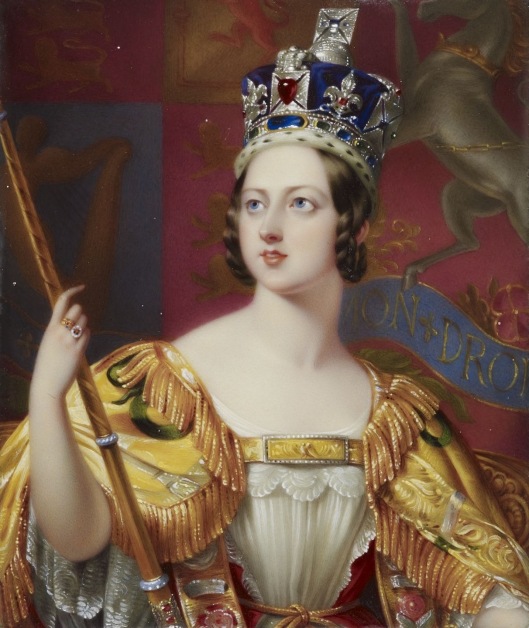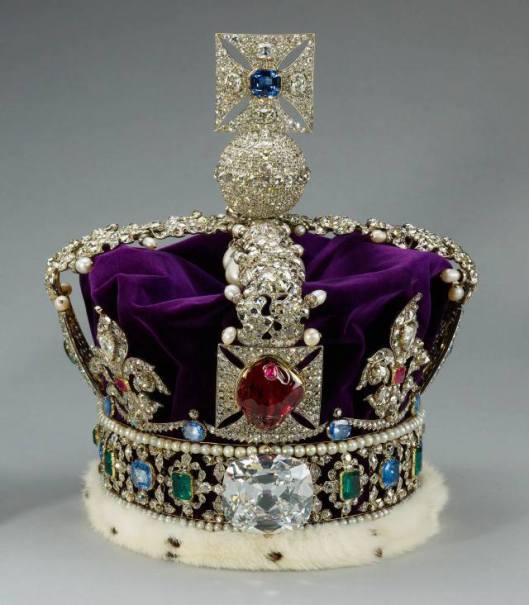Despite the Act of Settlement of 1701, which placed the succession to the throne on Princess-Electress Sofie of Hanover, there were those in England and France who whished that Prince James would succeed Queen Anne if he would convert to the Protestant faith.
Between August and September 1710, Queen Anne appointed a new Tory administration led by Robert Harley, who entered into a secret correspondence with Jean Baptiste Colbert, Marquis of Torcy the French Minister of Foreign Affairs, in which he claimed to desire James’s accession to the throne should James convert to Protestantism. A year later, however, the British government pushed for James’s expulsion from France as a precondition for a peace treaty with France
Queen Anne became severely ill at Christmas 1713 and seemed close to death. In January 1714, she recovered but clearly had little time to live. Through Jean Baptiste Colbert, Marquis of Torcy and his London agent, Abbé François Gaultier, maintained the correspondence with James and Henry St John, 1st Viscount Bolingbroke entered into a separate correspondence with him.
Harvey and de Torcy both stated to James that his conversion to Protestantism would facilitate his accession. However, James, a devout Catholic, replied to Torcy: “I have chosen my own course, therefore it is for others to change their sentiments.” In March came James’s refusal to convert, following which Harley and Bolingbroke reached the opinion that James’s accession was not feasible, though they maintained their correspondence with him.
As a result of Queen Anne’s death in August 1714, James’s second cousin, the Prince-Elector of Hanover, Georg Ludwig, a German-speaking Lutheran, and the son of Princess-Electress Sofie of Hanover, and who was the closest Protestant relative of the now-deceased Queen Anne, became king of the recently created Kingdom of Great Britain as George I.
James denounced him, noting “we have beheld a foreign family, aliens to our country, distant in blood, and strangers even to our language, ascend the throne”. Following George’s coronation in October 1714, major riots broke out in provincial England.
The next year, 1715, fourteen years after claiming the English, Scottish and Irish crowns Prince James unsuccessfully attempted to gain the British and Irish thrones during the Jacobite rising of 1715. A final attempt at restoration, the Jacobite rising of 1745, was led by his elder son Charles Edward Stuart (the Young Pretender).
After the unsuccessful invasion of 1715, James lived in Papal territory, first at Avignon (April 1716 – February 1717), then at Pesaro (1717) and Urbino (July 1717 – November 1718).
Pope Clement XI offered James the Palazzo Muti or Palazzo del Re in Rome as his residence, which he accepted. Pope Innocent XIII, like his predecessor, showed much support. Thanks to his friend Cardinal Filippo Antonio Gualterio, James was granted a life annuity of 12,000 Roman scudi. Such help enabled him to organise a Jacobite court at Rome, where, although he lived in splendour, he continued to suffer from fits of melancholy.
In exercise of his pretended position, James purported to create titles of nobility, now referred to as Jacobite Peerages, for his British supporters and members of his court, none of which have ever been legally recognised in Britain.
The court-in-exile became a popular stop for English travellers making a Grand Tour, regardless of political affiliation. For many, it functioned as an unofficial consulate. Those in need of medical attention preferred being treated by one of their own countrymen. In 1735 court physicians tended to Edmund Sheffield, 2nd Duke of Buckingham and Normanby, and thirty years later to James Boswell.
In 1748 with the Treaty of Aix-la-Chapelle which ended the War of the Austrian Succession, one of the terms was that King Louis XV of France and Navarre recognized King George II of Great Britain and Ireland as the legitimate sovereign of Great Britain and that France also agrees to expel the Jacobite pretender Charles Edward Stuart.
Marriage and progeny
Louise Adélaïde d’Orléans of France (Mademoiselle d’Orléans), daughter of Philippe II, Duke of Orléans, was at one time suggested as a wife for James, but nothing came of it.
In March 1717, while James was visiting Modena, he became engaged to his cousin Benedetta d’Este, but her father Rinaldo III put an end to the engagement to preserve his relations with Hanover and Great Britain.
On September 1719, James married Maria Clementina Sobieski (1702–1735), granddaughter of King John III Sobieski of Poland. The wedding was held in the chapel of the Episcopal Palace in Montefiascone, near Viterbo. By his wife he had two sons:
1. Charles Edward Stuart (1720 – 1788), nicknamed “Bonnie Prince Charlie.” Following James’s death in 1766, Charles Edward Stuart continued to claim the British and Irish crowns as King Charles III, as part of the Jacobite succession.
2. Henry Benedict Stuart (1725 – 1807), a cardinal of the Catholic Church. Henry’s father made him Duke of York (in the Jacobite peerage), and it was by this title that he was best known. Upon the death of his brother in 1788, Henry became known by Jacobites as Henry IX, although publicly he referred to himself as Cardinal called Duke of York (to indicate that while he was called Duke of York, he actually held another title). Henry made no effort to seize the thrones.
Death
After a lingering illness, James died aged 77 on January 1, 1766, at his home, the Palazzo Muti in Rome, and was buried in the crypt of St. Peter’s Basilica in present-day Vatican City. His grave is marked by the Monument to the Royal Stuarts. His claimed reign, had it been legal, lasted for 64 years, 3 months and 16 days, longer than any British monarch until Queen Elizabeth II’s reign surpassed it on May 23, 2016.
End of papal support
Following James’s death Pope Clement XIII refused to recognise the claim to the British and Irish thrones of his elder son Charles, which had severely exacerbated the hostility between England and the Catholic Church.
Instead, from January 14, 1766, in stages over the following decade, Rome accepted the Hanoverian dynasty as the legitimate rulers of Britain and Ireland; this was accompanied by a gradual relaxation and reform of the anti-Catholic “penal laws” in Britain and Ireland.
Two months after James’s death, on March 14, the royal arms of England were removed from the doorway of the Palazzo Muti. In 1792, the papacy specifically referred to George III as the “King of Great Britain and Ireland”, which elicited a protest from James’s younger son Henry, who was by then the Jacobite claimant.
The Jacobite pretenders called themselves “Kings of England, Scotland and Ireland” as they refused to accept the Act of Union of 1707 which United the Kingdoms of England with the Kingdom of Scotland creating the Kingdom of Great Britain and Ireland.













